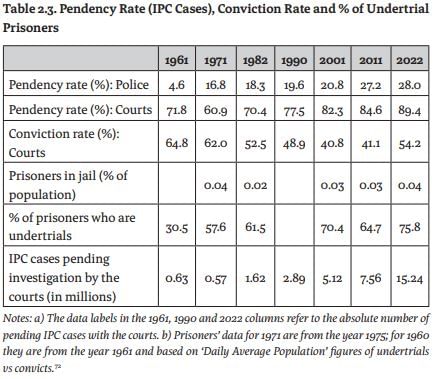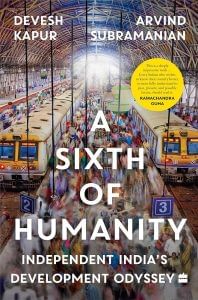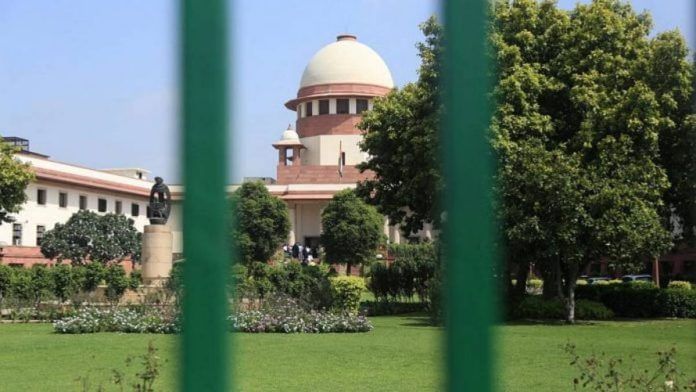In contrast to the broad maintenance of order, however chequered, India’s adherence to the rule of law has been a saga of multiple failures, across all actors and institutions from police to prosecutors, from forensic labs to judges and courts, extending all the way to the penal system. Above all, it is a failure deliberately engineered by India’s political class across all political parties. The road to justice in India is less a highway and more a deeply potted road that, in some areas, simply disappears.
A prime function of any State is providing safety to its citizens. Basic law and order is to order what public health is to health. It is the first line of defence and its weaknesses are not only a major source of insecurity among citizens but inevitably corrode the fabric of daily life. Under the British, the principal function of the police was to maintain order. Paradoxically, independent democratic India did little better.
At the beginning of the twentieth century, the police in India was ‘generally regarded as corrupt and oppressive’ and had ‘utterly failed to secure the confidence … of the people’ as per an official government report. Little changed after Independence. The crux of the problem was identified from the 1950s. In the south, the Kerala Police Reorganisation Committee (1959) put it
bluntly: ‘The greatest obstacle to efficient police administration flows from the domination of party politics under the State administration … The result of partisan interference is often reflected in lawless enforcement of laws, inferior service and in general decline of police prestige.’
In the north, the Punjab Police Commission (1961/62) was almost identical in its diagnosis that ‘… members of political parties, particularly of the ruling party, whether in the Legislature or outside, interfere considerably in the working of the police for unlawful ends … the result of this political interference is disastrous and it has considerably and very seriously affected the police work in the State’. A decade later, the Tamil Nadu Police Commission (1971) came to the same conclusion.
Police excesses in the Emergency led the new Janata government of 1977–79 to set up a National Police Commission, which observed that ‘What the [last] Police Commission said in 1903 appears more or less equally applicable to the conditions obtaining in the police force today!’ The consequences, it warned, were stark:
There is no doubt that, at present, the entire criminal justice system in our country is weak, is seen to be oppressive on the poor and the helpless and is highly convenient for the rich and the power elite … The victim of an offence does not believe that he will get justice from this system, particularly if he is poor and lacks influence.
Pervasive political interference in postings and transfers, arrests, investigations and filing of charge-sheets went hand-in-hand with harassing policemen unwilling to comply with illegal orders. Frustrations among rank-and-file policemen about their shabby treatment exploded into strikes and riots by the police themselves in 1979–80, highlighting the ‘persistent grievances alleging discrimination, interference, neglect and delay on the one hand and the outcry against brutality, callousness, partisanship and inefficiency on the other …’
The National Police Commission’s mammoth eight-volume study went nowhere. It had drawn on the report of the Shah Commission, which had been set up to examine the excesses of the Emergency, but by the time its report came out, Indira Gandhi was back in power and her government explicitly rejected the report’s analysis of police brutality in those years. In the next few decades, numerous new commissions on police reforms would be set up—and their findings similarly ignored.
Finally, in 2006, the Supreme Court gave specific directions to the central and state governments to carry out structural changes in the police with a view to insulate it from political pressures. However, once again progress was tardy. A decade after the Supreme Court’s directive, a review found that the majority of states were non-compliant with most of the directives, particularly the most important ones.
The effectiveness—or rather lack thereof—of the courts and the police is highlighted in Table 2.3. Pendency rates (measured as the fraction of cases that remain pending with the courts/police out of the total Indian Penal Code cases that came up for investigation in that year) steadily increased for the courts as well as the police over the last six decades.
While the pendency rate for the police increased six-fold since 1961, that of the courts increased by half, reaching almost 90 per cent in 2022. Conversely, conviction rates (defined as the fraction of cases convicted out of all the cases in which the trials were completed) steadily declined from 1961 to 2011 (from 65 per cent to 41 per cent), before increasing again. However, despite this increase, India’s conviction rate (a little over 50 per cent in 2022) is well below other countries.

Delays in trials led India to have one of the highest fractions of undertrials in its prison population—doubling since 1961 to about 76 per cent in 2022—despite a relatively low incarceration rate. Many of these prisoners are poor and cannot afford bail, further crowding an already overcrowded prison system. Meanwhile, politicians charged with heinous crimes have little trouble obtaining bail and delaying trials for years.
The general presumption is that the rise in pendency is due to a lack of judges. However, between 1956 and 2023, even as India’s judicial strength (judges per million people) almost tripled (from 5.7 to 14.6), pending cases per million population soared from 1,924 in 1956 to 35,619 by 2023.
The adequacy of judicial strength relative to the caseload is a better indicator. Here, too, while the annual number of cases instituted (and disposed of) between 1971 and 2011 increased by about 62 per cent, cases pending increased by an order of magnitude. The rising tide of cases and the need for more judges have been constant laments almost since Independence.
In 1958, the Law Commission argued that ‘The root cause of the progressive accumulation of old cases in several states is that, in the past, in spite of the growing volume of work, the strength of the judiciary was not proportionately increased.
The machinery of India’s justice system—the judiciary (other than the Supreme Court), police (other than CAPFs), prisons—is a state subject and is funded by states. Yet despite repeated admonitions over six decades, all states behaved similarly, making pitiful investments in the justice system, including the judiciary (both personnel and infrastructure), even though the resources required were relatively minor compared to the fiscal haemorrhaging just in electricity subsidies and economic gains estimated at 30 times higher than the personnel cost of hiring an additional judge.
While judicial strength and vacancies were undoubtedly important, they are just one aspect of the poly-crisis afflicting the Indian legal system. India’s political and policy elite had an unusual faith in new laws to achieve policy goals. The result was the proliferation of laws—and more laws led to more cases.
For instance, the 1950s saw a large number of land-reform laws being passed, swamping the courts with cases under these acts. In the 1970s, over 0.6 million prohibition-related cases (cases involving the sale and consumption of alcohol) were registered and about the same number of persons arrested annually.
A study in Tamil Nadu found that prohibition work absorbed about 30 per cent of the time and labour of police station staff and 40 per cent of the time of all subordinate criminal courts. Half a century later, after Bihar imposed prohibition in 2016, in less than six years its courts were clogged with 0.56 million cases and 0.75 million arrested, crowding out all other items on the Patna High Court’s already swollen docket as well as further stuffing overcrowded jails with even more undertrials. Laws matter only if they can be enforced, and enforcement requires resources.
A second factor was the laws themselves. The courts’ dockets were flooded with minor infractions such as challans (traffic tickets) and check-bouncing cases (more than three million cases). A greater recourse to fines or plea bargaining (which India only introduced in 2006 but which failed to take off) could have been tried but was not.
The judiciary itself has much to answer for. While there is much to commend in the role of India’s Supreme Court, the attention it has garnered within the broader rubric of order and justice is similar to the attention on the elite Indian Institutes of Technology (IITs) within education. A bedecked superstructure concealed a dilapidated base.
Also read: Supreme Court’s nod to green cracker is headache for Delhi agencies. Implementation is key
Following the Emergency, when the Supreme Court’s servile deference to the Executive branch severely dented its credibility, the court became much more interventionist, championing Public Interest Litigation (PILs), deciding that Supreme Court judges would be selected by a collegium of Supreme Court judges, inserting itself in appointments to high courts as well as an array of quasi-judicial bodies, and limiting the power of the government to establish special courts for specific purposes (such as administrative tribunals).
An institution that tried to restrain others failed to restrain itself. The Supreme Court waxed eloquent about diversity but was anything but diverse itself.
There was virtually no remedy for making an errant judge account for his actions other than impeachment, despite rules to investigate judicial impropriety. Instead of focusing on resolving major legal questions and constitutional issues, the apex court increasingly focused on special leave petitions (SLPs) that accounted for about 90 per cent of its work.
The ‘somewhat important’ crowded out the ‘critically important’. While SLPs are often required to correct obvious faults in lower courts, the quality problem with judges is ubiquitous across all courts. The court’s ‘strategic procrastinations’ on critical but difficult constitutional questions made it appear that while it pitied the plumage, it forgot the dying bird.
 This excerpt from Devesh Kapur and Arvind Subramanian’s ‘A Sixth Humanity: Independent India’s Development Odyssey’ has been published with permission from HarperCollins India.
This excerpt from Devesh Kapur and Arvind Subramanian’s ‘A Sixth Humanity: Independent India’s Development Odyssey’ has been published with permission from HarperCollins India.






